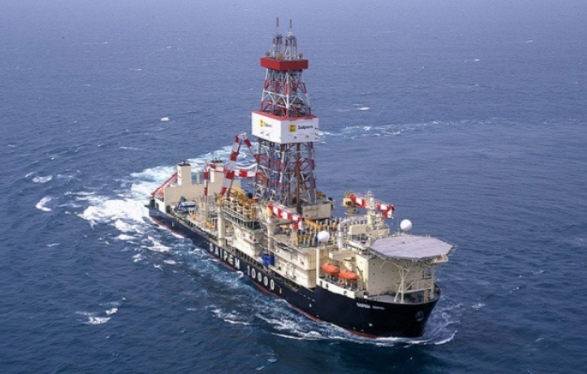The drill ship rig stands as an impressive feat of engineering prowess within the realm of offshore oil and gas drilling, offering both spectacle and adaptability. These vessels seamlessly merge the capabilities of a standard drilling rig with the mobility of a ship, granting access to remote and challenging offshore locations. This article delves into the captivating world of the drill ship rig, exploring its architecture, functionalities, and pivotal role in unlocking substantial energy resources beneath the seabed.

Key Components and Features of a Drill Ship Rig
A drill ship rig serves as a specialized vessel tailored for offshore drilling endeavors. Unlike conventional stationary oil drilling rigs fixed to the ocean floor, these ships boast self-propulsion capabilities, enabling them to traverse diverse drilling sites. This mobility proves invaluable in reaching deepwater reserves located in remote and demanding environments, rendering drill ships indispensable assets in the oil and gas sector.
Drilling Equipment:
Drilling Derrick: A towering structure that provides support to the drilling apparatus, often equipped with hoisting mechanisms for the manipulation of the drill string and associated tools.
Dynamic Positioning System (DPS):
A sophisticated amalgamation of thrusters and sensors enabling the drill ship to maintain a steady position above the drilling site, crucial for precise drilling operations in deepwater and challenging environmental conditions.
Storage and Processing Facilities:
Mud and Fluid Storage: Dedicated tanks for storing drilling mud and fluids essential for maintaining drill bit temperature and pressure.
Casing and Drill Pipe Storage: Designated areas for storing casing and drill pipes utilized in wellbore lining and stabilization.
Hydrocarbon Processing: Facilities for processing hydrocarbons, encompassing separation systems and storage tanks for recovered oil.
Accommodation and Support Facilities:
Crew Accommodation: Equipped with extensive safety systems and accommodations for crew members, including fire detection systems, lifeboats, and safety gear.
Workshops: Small workshops for maintenance and repair activities.
Helideck:
Essential for crew changes and transportation of supplies and equipment, facilitating helicopter landings for logistical and personnel rotations.
Control Room and Monitoring Systems:
Equipped with state-of-the-art control systems providing real-time data on drilling parameters, enabling precise monitoring and control of drilling operations.
Safety Systems:
Rigorous safety measures including fire detection systems, lifeboats, and crew safety equipment, bolstered by regular safety drills and procedures.
Massive generators and propulsion systems powering onboard systems and providing propulsion capabilities.
Subsea Equipment:
Risers and umbilicals connecting subsea wellheads and control systems to the drill ship, facilitating safe drilling, control, and maintenance operations.
Communication Systems:
Sophisticated communication infrastructure including satellite links for seamless coordination with onshore offices and ensuring operational safety.
Systems for wastewater collection and treatment, waste disposal management, and spill response equipment to minimize environmental impact.
Mooring Systems:
Some drill ships feature mooring systems alongside dynamic positioning systems, using anchors or alternative methods to secure the vessel during drilling operations.
Functions and Capabilities of a Drill Ship Rig
Deepwater Drilling:
Specifically engineered for deepwater operations, capable of drilling to considerable depths below the sea surface with precise control.
Exploratory Drilling:
Essential for identifying potential oil and gas reserves, conducting test wells to assess hydrocarbon deposits in subsea formations.
Production Drilling:
Capable of extraction operations following successful exploration, serving as mobile production platforms for oil and gas extraction from the seabed.
Rapid Deployment:
Enables swift relocation to new drilling sites, facilitating rapid adaptation to evolving market conditions and exploration prospects.

Challenges and Environmental Concerns for a Drill Ship Rig
Environmental Impact:
Risk of oil spills and disruption of marine ecosystems, necessitating stringent spill response strategies and environmental management practices.
Potential hazards including blowouts and fire incidents, demanding comprehensive safety protocols and emergency response capabilities.
Regulatory Compliance:
Adherence to complex international, national, and regional regulations governing offshore drilling operations.
Weather and Environmental Conditions:
Operating in remote and harsh environments, requiring resilience to extreme weather conditions and meticulous planning to mitigate risks.
Resource Depletion:
Considerations regarding the depletion of finite resources and associated environmental impacts.
Waste Management:
Proper handling and disposal of drilling waste materials to minimize environmental harm.
Climate Change Considerations:
Addressing the contribution of fossil fuel extraction to greenhouse gas emissions and climate change.
Accidental Discharges:
Potential inadvertent releases of chemicals, drilling fluids, or waste materials impacting marine environments.
Stranding Risk:
Potential risks of grounding or stranding, necessitating measures to mitigate environmental damage.
In summary, the drill ship rig stands as a versatile and self-sufficient platform for offshore drilling operations, capable of operating in demanding marine environments. While offering significant advantages, it also poses challenges and environmental concerns that must be diligently managed to ensure safe and sustainable operations. Through adherence to stringent safety measures, technological innovations, and environmental stewardship, the drill ship rig continues to play a pivotal role in unlocking offshore energy resources while minimizing environmental impact and ensuring operational safety.







